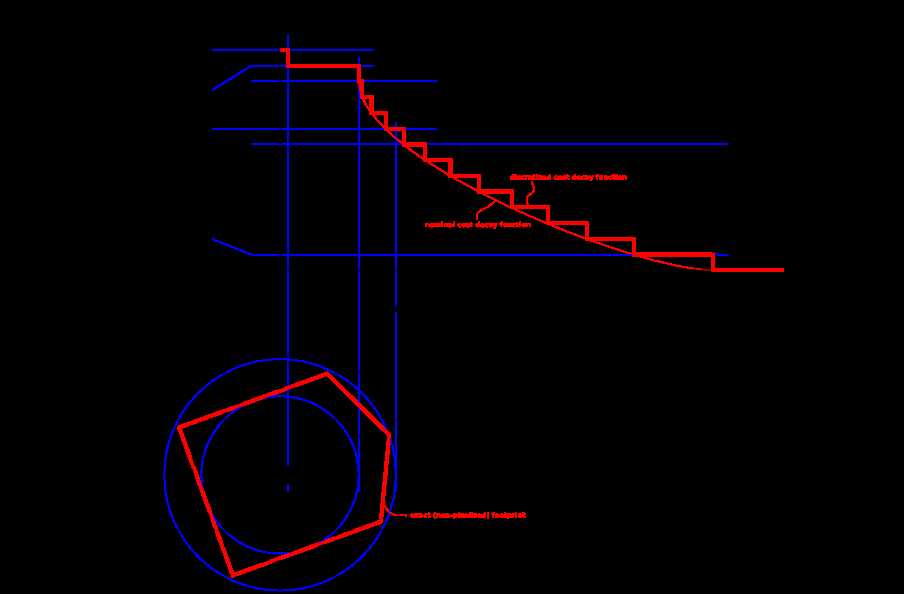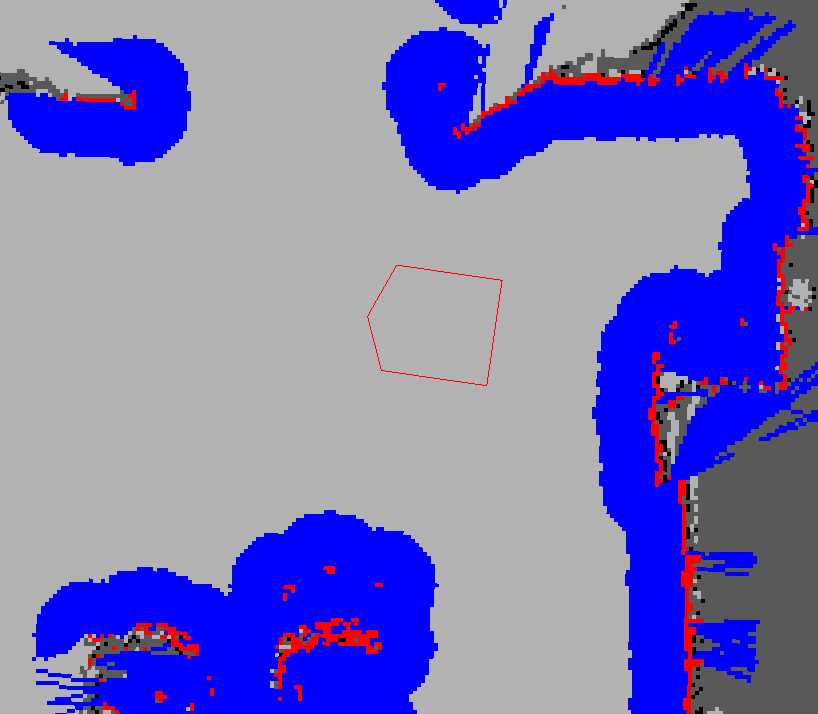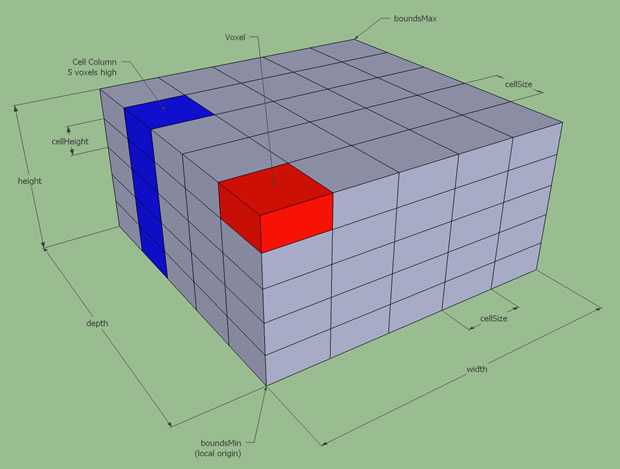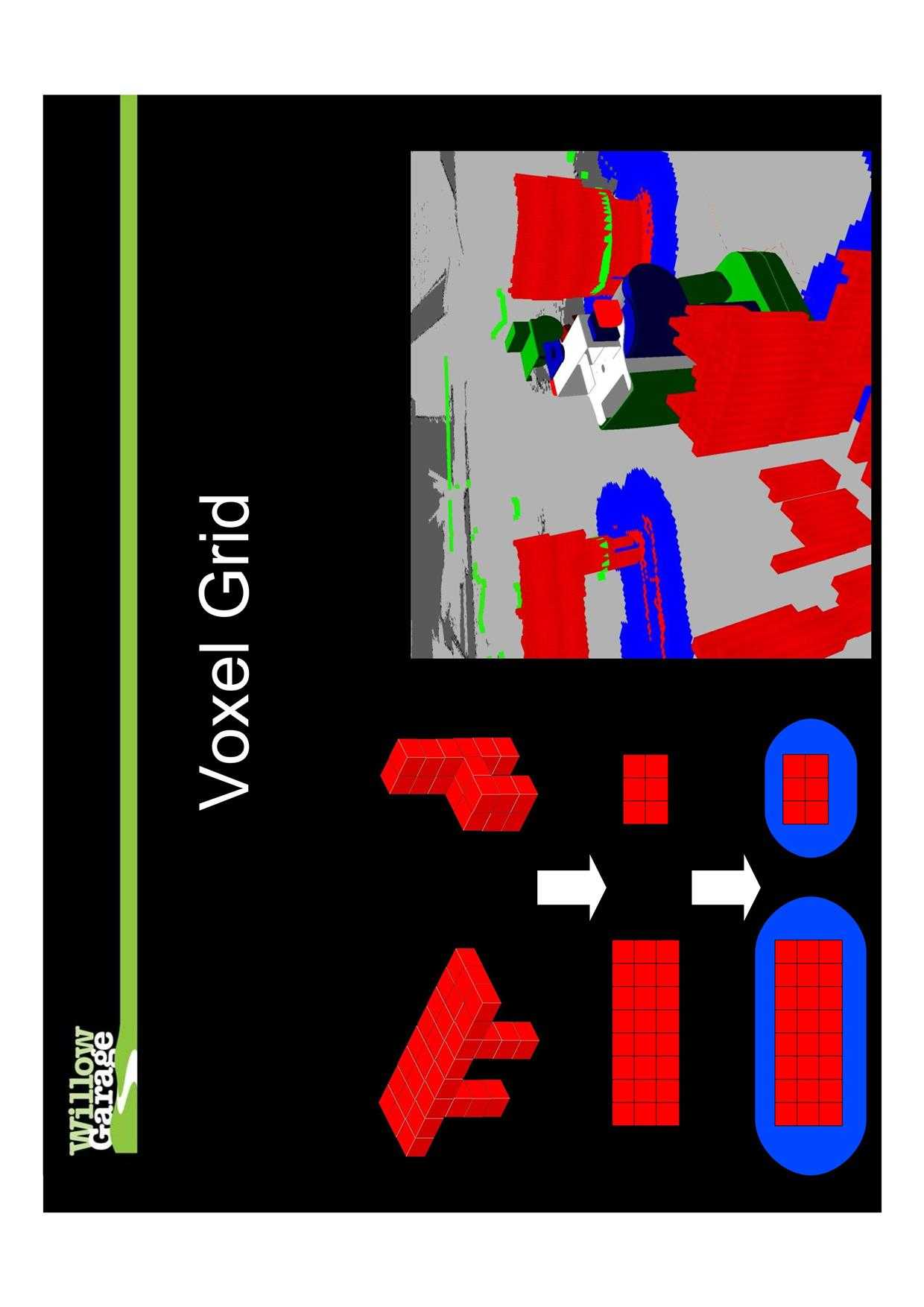关于ros stage与navigation仿真总结5月16号
Posted
tags:
篇首语:本文由小常识网(cha138.com)小编为大家整理,主要介绍了关于ros stage与navigation仿真总结5月16号相关的知识,希望对你有一定的参考价值。
主要总结内容
在costmap里是怎么判断机器人和障碍物碰撞了
stage_ros包输入输出,stage是怎么回事
voxel grid和voxel layer怎么在costmap里起作用
costmap map type
在costmap里是怎么判断机器人和障碍物碰撞了

图片网址:http://wiki.ros.org/costmap_2d?action=AttachFile&do=get&target=costmapspec.png
在这幅图片里可以看到左下角有两个圆,一个机器人轮廓外切圆一个机器人内切圆
机器人在costmap里就能够简化成为这两个圆
Inflation is the process of propagating cost values out from occupied cells that decrease with distance. For this purpose, we define 5 specific symbols for costmap values as they relate to a robot.
- "Lethal" cost means that there is an actual (workspace) obstacle in a cell. So if the robot‘s center were in that cell, the robot would obviously be in collision.
- "Inscribed" cost means that a cell is less than the robot‘s inscribed radius away from an actual obstacle. So the robot is certainly in collision with some obstacle if the robot center is in a cell that is at or above the inscribed cost.
-
"Possibly circumscribed" cost is similar to "inscribed", but using the robot‘s circumscribed radius as cutoff distance. Thus, if the robot center lies in a cell at or above this value, then it depends on the orientation of the robot whether it collides with an obstacle or not. We use the term "possibly" because it might be that it is not really an obstacle cell, but some user-preference, that put that particular cost value into the map. For example, if a user wants to express that a robot should attempt to avoid a particular area of a building, they may inset their own costs into the costmap for that region independent of any obstacles. Note, that although the value is 128 is used as an example in the diagram above, the true value is influenced by both the inscribed_radius and inflation_radius parameters as defined in the code.
- "Freespace" cost is assumed to be zero, and it means that there is nothing that should keep the robot from going there.
- "Unknown" cost means there is no information about a given cell. The user of the costmap can interpret this as they see fit.
- All other costs are assigned a value between "Freespace" and "Possibly circumscribed" depending on their distance from a "Lethal" cell and the decay function provided by the user.
The rationale behind these definitions is that we leave it up to planner implementations to care or not about the exact footprint, yet give them enough information that they can incur the cost of tracing out the footprint only in situations where the orientation actually matters.
这段话大概意思是
膨胀代价值随着机器人离障碍物距离增加而减少
想象一幅图都是格子,每个格子里有代价值:
"Lethal" cost代价值 一定有障碍物,这个格子上
"Inscribed" cost代价值说明这个格子离障碍物距离小于机器人内切圆半径
"Possibly circumscribed"代价值说明这个格子离障碍物距离小于机器人外切圆半径,但是大于内切圆半径
当机器人中心在一个有着"Lethal" cost代价值格子上,看图是256,则机器人肯定和障碍物相碰了
当机器人中心在一个有着"Inscribed" cost代价值格子上则机器人也肯定和障碍物相碰
当机器人中心在一个有着大于或者等于"Possibly circumscribed"代价值的格子上。则机器人不一定与障碍物相碰,这个取决于机器人方位

Note: In the picture above, the red cells represent obstacles in the costmap, the blue cells represent obstacles inflated by the inscribed radius of the robot, and the red polygon represents the footprint of the robot. For the robot to avoid collision, the footprint of the robot should never intersect a red cell and the center point of the robot should never cross a blue cell.
这段话说明机器人轮廓不能与红色格子相交
机器人中心不能与蓝色格子相交,蓝色格子就是代价值为"Inscribed" 格子
stage是怎么回事
stage是一个仿真器提供了许多虚拟器件比如声呐,激光,和移动平台
这些都定义在.world文件里
.world怎么写:
http://playerstage.sourceforge.net/doc/stage-cvs/group__window.html
stage_ros包输入输出,是怎么回事
stage_ros封装了stage一些model
laser, position and camera models
poition定义了移动小车
laser定义了激光数据
并且将数据用topic引出来
比如laser有/base_scan topic
这些topic被navigation接受,用于move_base进行local costmap创建
然后move_base路径规划器在costmap上进行路径规划输出cmd_vel
cmd_vel是stage_ros订阅的主题,驱动虚拟小车移动
voxel grid是什么
voxel grid与occupancy grid不同
http://answers.ros.org/question/186783/difference-between-octomap-and-voxel-grid/


从上面那幅图可以看出voxel是直接投影成二维图像的,然后机器人在二维costmap上进行导航
Map Types
There are two main ways to initialize a costmap_2d::Costmap2DROS object. The first is to seed it with a user-generated static map (see the map_server package for documentation on building a map). In this case, the costmap is initialized to match the width, height, and obstacle information provided by the static map. This configuration is normally used in conjunction with a localization system, like amcl, that allows the robot to register obstacles in the map frame and update its costmap from sensor data as it drives through its environment.
The second way to initialize a costmap_2d::Costmap2DROS object is to give it a width and height and to set the rolling_window parameter to be true. The rolling_window parameter keeps the robot in the center of the costmap as it moves throughout the world, dropping obstacle information from the map as the robot moves too far from a given area. This type of configuration is most often used in an odometric coordinate frame where the robot only cares about obstacles within a local area.
costmap有两种地图,一种是用户定义地图,如激光网格地图,提前建好
还有一种是设置rolling_window为true则机器人位于local costmap中心,机器人只能够看到一定范围内障碍物,比如5米5米,这个可以设定,超过这个距离机器人就放弃这个数据dropping obstacle information from the map as the robot moves too far from a given area
以上是关于关于ros stage与navigation仿真总结5月16号的主要内容,如果未能解决你的问题,请参考以下文章